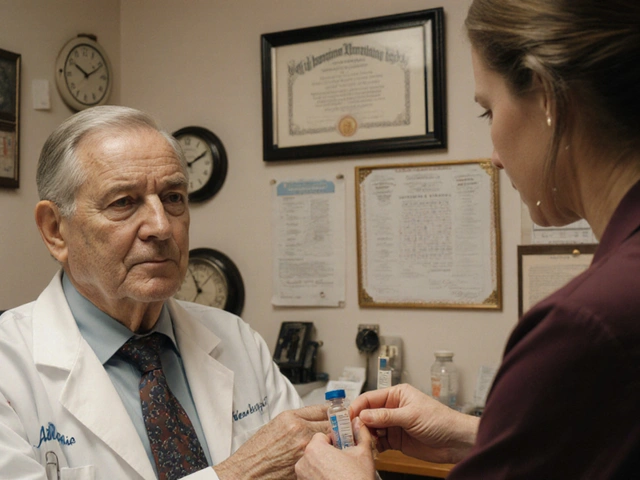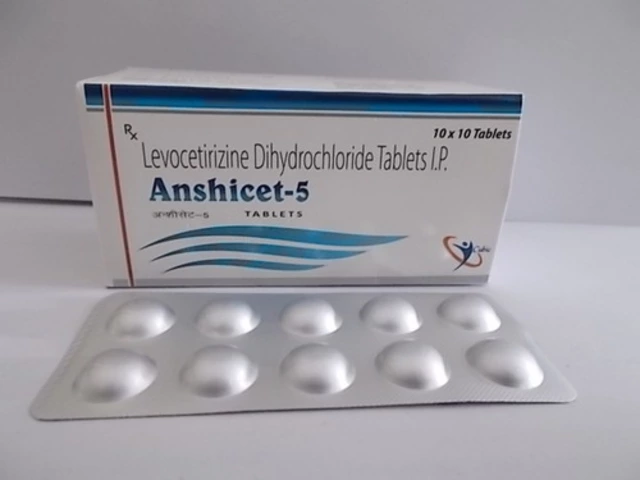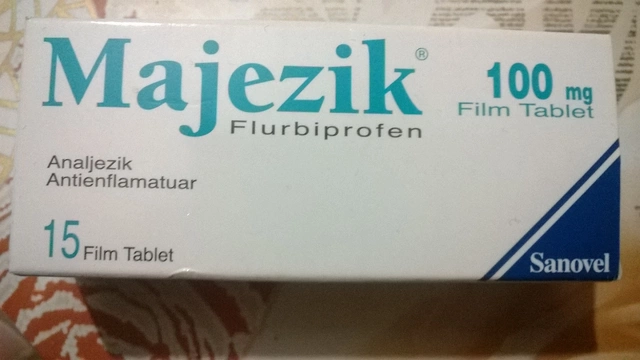Thyroid cancer is a malignancy that arises from the cells of the thyroid gland, a butterfly‑shaped organ located at the base of the neck. It accounts for about 1% of all new cancer cases worldwide, yet its spectrum is anything but uniform. Understanding the different sub‑types is the first step toward a correct diagnosis and effective treatment.
Why the Sub‑type Matters
Each thyroid cancer subtype behaves uniquely-some grow slowly and respond well to surgery, while others spread quickly and need aggressive therapy. The four main categories-papillary, follicular, medullary, and anaplastic-cover roughly 95% of all cases. A fifth, Hürthle cell carcinoma, sits on the borderline between follicular and anaplastic patterns, adding another layer of complexity.
Overview of the Major Types
Below is a snapshot of the five most common thyroid cancer entities, highlighting their key clinical attributes.
| Type | Prevalence | Typical Age | Growth Rate | Prognosis (5‑yr survival) | First‑line Treatment |
|---|---|---|---|---|---|
| Papillary thyroid carcinoma (PTC) | ≈80% | 30‑50years | Slow | ≈98% | Surgery±radioactive iodine |
| Follicular thyroid carcinoma (FTC) | ≈10% | 40‑60years | Moderate | ≈90% | Surgery±radioactive iodine |
| Medullary thyroid carcinoma (MTC) | ≈4% | 40‑55years | Variable | ≈78% | Surgery±targeted therapy |
| Anaplastic thyroid carcinoma (ATC) | <1% | 65‑75years | Very fast | <10% | Multimodal (surgery+radiation+chemo) |
| Hürthle cell carcinoma (HCC) | ≈2% | 50‑70years | Moderate‑fast | ≈80% | Surgery±radioactive iodine (less effective) |
Pathology at a Glance
All thyroid cancers originate from one of two cell lines. Follicular cells give rise to papillary, follicular and Hürthle cell carcinomas, while parafollicular (C) cells produce medullary carcinoma. Anaplastic carcinoma often represents a dedifferentiated form of either papillary or follicular disease, losing the ability to produce thyroid hormone.
Genetic hallmarks differ dramatically. About 60% of papillary cancers harbor a BRAF V600E mutation, which drives MAPK pathway activation. Follicular tumors frequently show RAS mutations or PAX8‑PPARG fusions. Medullary cancers are linked to germline RET proto‑oncogene alterations, especially in familial MEN2 syndromes. These molecular clues not only aid diagnosis but also open doors to targeted drugs such as vandetanib for RET‑mutated disease.
How Doctors Spot the Disease
The first clue is usually a lump in the neck, discovered during a routine physical exam or incidentally on a neck ultrasound performed for another reason. When a nodule is found, the work‑up follows a fairly standardized algorithm:
- High‑resolution ultrasound to assess size, composition, calcifications and vascularity.
- Fine‑needle aspiration (FNA) biopsy, often guided by ultrasound, to obtain cellular material.
- Pathology reports use the Bethesda System to grade cytology from benign to malignant.
- When FNA is indeterminate, molecular panels (e.g., testing for BRAF, RAS, RET) help clarify the risk.
- Blood tests for serum thyroglobulin (post‑surgery marker) and calcitonin (specific for medullary) may be ordered.
Staging follows the TNM (Tumor‑Node‑Metastasis) system, capturing tumor size, lymph‑node involvement and distant spread. This stage determines prognosis and guides treatment intensity.

Treatment Pathways Tailored to Sub‑type
While surgery sits at the core of most thyroid cancer care, the nuances differ:
- Papillary & Follicular: Total or hemi‑thyroidectomy, followed by radioactive iodine (RAI) therapy for residual disease.
- Medullary: Complete thyroidectomy plus central neck dissection; RAI is ineffective because C‑cells do not take up iodine. Targeted kinase inhibitors are reserved for advanced cases.
- Anaplastic: Aggressive multimodal approach-surgery (if resectable), external‑beam radiation, and platinum‑based chemotherapy. Experimental immunotherapy trials are emerging.
- Hürthle cell: Surgery remains primary; RAI response is limited, so clinicians may consider external radiation or systemic therapy for metastatic disease.
Hormone replacement with levothyroxine is standard after thyroid removal, keeping thyroid‑stimulating hormone (TSH) suppressed to reduce recurrence risk.
Prognosis and Survivorship
Overall survival for thyroid cancer is excellent-over 95% five‑year survival-thanks largely to the indolent nature of papillary and follicular cancers. However, the picture changes sharply for medullary (≈78%) and especially anaplastic (under 10%). Early detection, accurate sub‑type classification, and appropriate use of targeted agents dramatically improve outcomes.
Long‑term follow‑up includes periodic neck ultrasounds, serum thyroglobulin (for differentiated cancers) or calcitonin (for medullary), and occasionally whole‑body scans using radioactive iodine. Patients are also counseled about lifestyle factors-maintaining a healthy weight, limiting radiation exposure, and ensuring adequate iodine intake.
Related Concepts and Next Steps
Understanding thyroid cancer opens the door to several adjacent topics worth exploring:
- Thyroid nodules - the benign counterparts that trigger most work‑ups.
- Genetic counseling for families with MEN2 syndrome.
- Emerging immunotherapies for anaplastic thyroid carcinoma.
- Advances in molecular testing panels that refine risk stratification.
- Quality‑of‑life issues after total thyroidectomy, including voice changes and calcium monitoring.
Readers who have grasped the basics of thyroid cancer types may want to dive deeper into any of these areas, especially the genetic underpinnings that influence both screening and targeted treatment.
Frequently Asked Questions
What are the most common symptoms of thyroid cancer?
Most patients notice a painless lump in the front of the neck. Occasionally, symptoms include hoarseness, difficulty swallowing, or a feeling of tightness. Advanced disease can cause pain, rapid neck swelling, or shortness of breath.
How is papillary thyroid carcinoma diagnosed?
Diagnosis starts with a high‑resolution ultrasound. If the nodule meets size or suspicious‑feature criteria, a fine‑needle aspiration biopsy is performed. Cytology showing characteristic papillary structures, often coupled with a BRAF V600E mutation, confirms the diagnosis.
Why doesn’t radioactive iodine work for medullary thyroid cancer?
Medullary cancer arises from C‑cells, which lack the sodium‑iodide symporter needed to trap iodine. Consequently, radioactive iodine cannot be taken up, making surgery and RET‑targeted drugs the mainstays.
What lifestyle changes can lower my risk of thyroid cancer?
Avoiding excessive radiation exposure (especially in childhood), maintaining adequate dietary iodine, and keeping a healthy body weight are the most evidence‑based measures. Smoking cessation also helps, as tobacco is linked to anaplastic disease.
Is thyroid cancer hereditary?
A small percentage of cases, notably medullary carcinoma, are inherited via RET mutations (MEN2A, MEN2B, or familial medullary thyroid cancer). Genetic testing is recommended for patients with a family history or early‑onset disease.






Bhupendra Darji
24 September 2025Great overview, thank you for simplifying thyroid cancer types.
Robert Keter
25 September 2025When I first glanced at the table of thyroid cancer subtypes, I felt as if I had opened a Pandora's box of medical intricacies.
The stark contrast between the indolent papillary carcinoma and the brutally aggressive anaplastic variant reads like a tragedy and a comedy intertwined.
Each statistic in the chart whispers a story of patients navigating uncertain futures, of surgeons holding scalpel and hope.
It is astonishing how the prevalence of papillary carcinoma dwarfs the others, yet the mortality of anaplastic thyroid cancer lurks like a shadow.
The article’s emphasis on radioactive iodine as a first-line treatment for differentiated cancers evokes images of targeted missiles seeking malignant cells.
Meanwhile, the mention of targeted therapy for medullary thyroid carcinoma suggests a future where precision medicine reigns supreme.
I cannot help but marvel at the evolution of diagnostic tools, from fine‑needle aspiration to molecular profiling, each advancing our grasp on these elusive neoplasms.
The intertwining of genetics, such as RET mutations in medullary carcinoma, adds another layer of depth to personalized care.
Furthermore, the table’s inclusion of Hürthle cell carcinoma reminds us that classification is not merely academic but has real therapeutic implications.
Patients diagnosed in their 30s face a different prognosis than those encountered in their 60s, a fact that cannot be ignored.
The five‑year survival rates, hovering near 98% for papillary carcinoma, paint an optimistic picture for early detection.
Conversely, the grim 78% survival for medullary carcinoma signals the need for vigilant monitoring.
Anaplastic thyroid carcinoma, with its dismal survival, stands as a stark reminder of the limits of current interventions.
Yet, the article hints at multimodal approaches-surgery, radiation, and emerging immunotherapies-that may yet shift this bleak narrative.
In the grand tapestry of oncology, thyroid cancer may be a small thread, but its diverse manifestations demand our full attention.
Thus, armed with this knowledge, clinicians can tailor treatment plans, and patients can navigate their journeys with a clearer map.
Rory Martin
25 September 2025The data presented appears comprehensive, yet one cannot dismiss the possibility of undisclosed pharmaceutical influence.
It is prudent to question whether the recommended radioactive iodine truly serves patients or merely benefits manufacturers.
Such concerns warrant independent verification beyond the scope of this summary.
Until transparent studies emerge, caution remains advisable.
Maddie Wagner
26 September 2025I really appreciate how the article breaks down each subtype with clear age brackets and survival stats.
For anyone just learning about thyroid cancer, this kind of straightforward layout can demystify a daunting topic.
Remember, early detection and proper surgical planning can make a huge difference, especially for papillary and follicular cancers.
Patients should feel empowered to ask their doctors about the specific type they have, because treatment pathways can vary widely.
Keep sharing resources like this – knowledge is a powerful tool in the fight against cancer.
Boston Farm to School
27 September 2025From a cultural perspective, it’s interesting how thyroid disorders are sometimes linked to dietary iodine intake in different regions.
In some parts of the world, low iodine diets can actually influence the prevalence of certain thyroid cancers.
Understanding these nuances helps clinicians tailor public health recommendations alongside individual treatment plans.
Emily Collier
27 September 2025Excellent synthesis! The inclusion of both prevalence and prognosis gives a holistic view.
It reminds us that statistics are not just numbers; they represent real lives and outcomes.
For medullary carcinoma, the role of genetic counseling cannot be overstated – family screening saves lives.
Moreover, emerging targeted agents are reshaping the therapeutic landscape for aggressive subtypes.
Patients should stay informed about clinical trials, as they often provide access to cutting‑edge treatments.
Overall, this article equips both clinicians and patients with essential knowledge to navigate complex decisions.
Catherine Zeigler
28 September 2025Adding to what Emily highlighted, it’s crucial to emphasize the psychosocial aspects of a thyroid cancer diagnosis.
Many patients experience anxiety about hormone replacement after thyroidectomy, which can impact quality of life.
Support groups and counseling services are valuable resources that complement medical treatment.
Furthermore, the article could benefit from a brief mention of long‑term monitoring protocols for each subtype.
Regular ultrasound and thyroglobulin testing are standard for papillary carcinoma follow‑up.
Incorporating these practical tips would make the guide even more actionable for readers.
henry leathem
28 September 2025The breakdown is competent, yet the piece skirts the deeper molecular pathways that drive each subtype.
Without dissecting the oncogenic signaling cascades, clinicians are left with a superficial map.
Incorporating the BRAF V600E mutation prevalence in papillary carcinoma would elevate the analysis.
Future revisions should integrate precision oncology data to remain cutting‑edge.
jeff lamore
29 September 2025I see your point about molecular detail, but remember many readers are looking for a digestible summary.
Balancing depth with readability is always a challenge.
Perhaps a separate “advanced insights” section could satisfy both audiences.
Kris cree9
29 September 2025meh, looks like copy‑paste from a textbook.
Paula Hines
30 September 2025One could argue that the classification of thyroid neoplasms is not merely a taxonomic exercise but a reflection of deeper existential questions about cellular identity.
When a follicular cell decides to betray its programmed function, we are forced to confront the fluidity of nature's design.
Is cancer simply an aberration, or does it reveal an alternative pathway that evolution once explored?
These musings, while abstract, remind us that medical science sits at the crossroads of concrete data and philosophical wonder.
Nevertheless, the pragmatic data presented-prevalence, age distribution, survival-grounds the discussion in reality.
It is this duality that makes the field both challenging and endlessly fascinating.
As we move forward, integrating epigenetic landscapes with traditional histology will likely refine our understanding of these malignancies.
Until then, the current schema serves as a useful scaffold for clinicians navigating patient care.
John Babko
1 October 2025Appreciate the philosophical spin, Paula! While we might not solve the meaning of cancer today, expanding our research toolkit is definitely the way forward.
Stacy McAlpine
1 October 2025The article does a solid job of summarizing the main types, but I’d love to see more on how diet and lifestyle affect thyroid health across different cultures.
Roger Perez
2 October 2025👍 Absolutely, Stacy! Nutrition, especially iodine intake, plays a critical role. 🌿
michael santoso
2 October 2025The piece is comprehensive, yet it lacks a critical appraisal of the evidence hierarchy underpinning each recommendation.
For instance, the reliance on retrospective cohort data for radioactive iodine efficacy could be challenged.
In the era of evidence‑based medicine, such nuances are indispensable.
Future editions should incorporate systematic review findings to bolster credibility.
M2lifestyle Prem nagar
3 October 2025Stay focused and keep learning – you’ve got this!
Karen Ballard
4 October 2025Loved the clear table layout! 😊 It makes comparing sub‑types a breeze.
Gina Lola
4 October 2025Cool rundown. The jargon’s heavy, but I get the gist – thyroid cancer isn’t one‑size‑fits‑all.
Leah Hawthorne
5 October 2025This summary hits the sweet spot between detail and readability.
It’s a solid reference for anyone dabbling in endocrine oncology.
The inclusion of survival stats adds practical value.
Overall, well done!
Brian Mavigliano
5 October 2025Honestly, I think the whole emphasis on sub‑type survival numbers is overblown – most patients do fine regardless.
Why not focus on quality of life instead?
Also, the table misses out on newer immunotherapy breakthroughs.
We need to keep the conversation fresh, not stuck in old paradigms.
Just saying, a bit of skepticism never hurts.